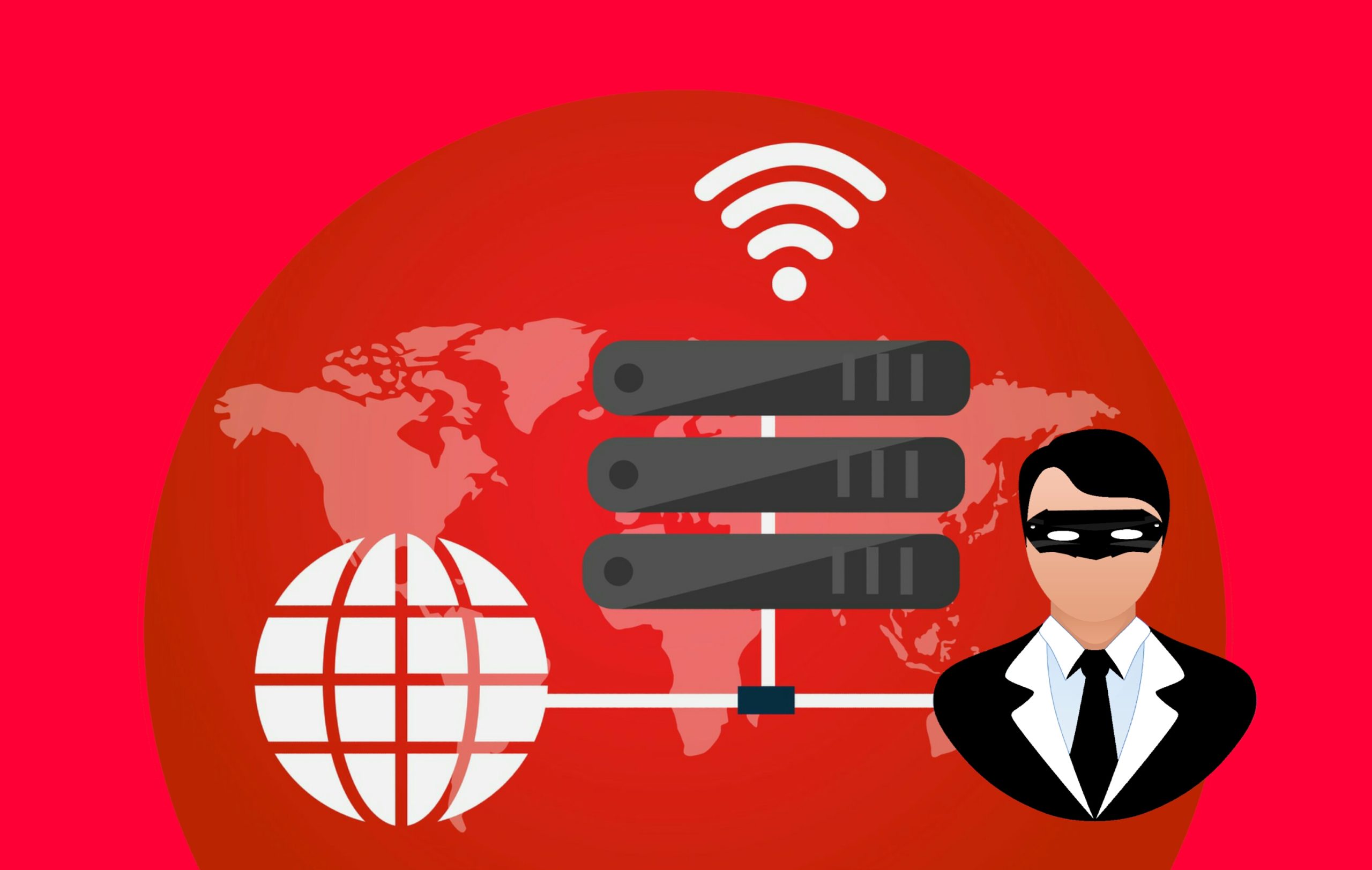Home » The Ultimate Guide to Staying Undetected Online with Proxy Subnets
The Ultimate Guide to Staying Undetected Online with Proxy Subnets
- Author: George Fellow
- Date Posted: June 13th, 2024
- Category: Proxy Companies

The Internet has become a vast resource for businesses, researchers, and marketers. Whether gathering data, automating tasks, or accessing geographically restricted content, proxies are crucial. Among the different types of proxies, proxy subnets stand out as a powerful tool, particularly for web scraping. This article will delve into proxy subnets, how they function, and why they are essential in avoiding IP bans and optimizing web scraping tasks.
Internet use for various purposes has grown exponentially over the years. Proxies, especially proxy subnets, have become indispensable tools for online operations that require anonymity, security, and efficiency. As businesses and individuals seek to leverage the vast amounts of online data, understanding the role and functioning of proxy subnets becomes increasingly essential. This comprehensive guide aims to provide insights into the workings of proxy subnets and their applications, particularly in scenarios where maintaining anonymity and avoiding detection are critical.
What Are Proxy Subnets?
Proxy subnets refer to a range of IP addresses grouped under a specific network. These subnets are part of a larger IP address block and are allocated by Internet Service Providers (ISPs). When used as proxies, these subnets provide a pool of IP addresses that can route internet traffic through different IPs, thereby masking the user’s IP address.
Understanding the structure and function of proxy subnets requires a basic knowledge of IP address allocation. IP addresses are essential components of Internet communication, serving as unique identifiers for devices connected to the Internet. ISPs manage these addresses and can allocate them in blocks, subdivided into smaller groups known as subnets. Proxy subnets leverage these smaller groups to distribute traffic across multiple IP addresses, enhancing anonymity and reducing the risk of detection during web activities such as scraping or automated tasks.
Understanding IP Address Allocation
To comprehend the concept of proxy subnets, it’s essential to understand how IP addresses are allocated. IP addresses are distributed in blocks, which can be divided into smaller subnets. For example, an ISP might own a block of IP addresses and divide it into smaller subnets for different customers. Each subnet contains a range of IP addresses. When used as proxies, they offer a way to distribute internet requests across multiple IPs within that range.
The allocation of IP addresses follows a hierarchical structure, with significant blocks allocated to ISPs, who then distribute smaller blocks to their customers. This hierarchical approach ensures efficient management and utilization of IP addresses across different regions and organizations. When these subnets are used as proxies, they enable a more granular control over internet traffic, allowing users to distribute their requests across multiple IP addresses. This distribution is crucial for activities requiring high levels of anonymity and avoiding detection mechanisms that websites may employ to prevent automated access or data scraping.

How Proxy Subnets Work
Proxy subnets distribute your internet traffic across multiple IP addresses within a specific subnet. Here’s a simplified process breakdown: First, an ISP allocates a block of IP addresses and subdivides it into smaller subnets. These subnets are then assigned to different users or organizations, which can use them as proxies. When configured, a proxy server rotates requests through different IP addresses within the subnet, making each request appear as if it comes from a different IP.
This process effectively masks the user’s IP address, making it difficult for websites to detect and block their activities. The rotation of IP addresses within the subnet is managed by proxy servers, which ensure that each outgoing request uses a different IP address. This technique is beneficial when large requests are made to a single website, as it helps distribute the load and avoid triggering anti-scraping measures. By utilizing proxy subnets, users can maintain a high level of anonymity and reduce the likelihood of their IP addresses being banned or flagged by target websites.
The Role of Proxy Subnets in Web Scraping
Web scraping involves extracting data from websites, often at a large scale. However, websites often have security measures to detect and block scraping activities. This is where proxy subnets come into play. By rotating requests through a proxy subnet, each request appears to come from a different IP, reducing the risk of being banned. Additionally, a proxy subnet distributes the load across multiple IPs, preventing any single IP from being overwhelmed with requests. This helps avoid bans and ensures more stable and efficient scraping.
Proxy subnets in web scraping are crucial for accessing valuable data sources. Websites employ techniques to detect and prevent scraping, such as rate limiting, IP blocking, and CAPTCHA challenges. By distributing requests across multiple IP addresses, proxy subnets can effectively circumvent these measures, allowing for continuous and reliable data extraction. This is particularly important for businesses that rely on web scraping for competitive intelligence, market research, or price monitoring. Proxy subnets provide the necessary infrastructure to perform these tasks at scale while minimizing the risk of detection and ensuring compliance with ethical and legal standards.
Types of Proxy Subnets
Proxy subnets can be classified based on the nature of the IP addresses and the allocation method. Residential proxy subnets are IP addresses assigned to real residential devices, like home routers. These proxies are considered highly reliable and difficult to detect since they mimic regular user behavior. Providers like Smartproxy and Bright Data offer extensive residential proxy subnet services, making them ideal for web scraping and accessing restricted content.
On the other hand, datacenter proxy subnets consist of IP addresses from data centers. These are not affiliated with ISPs and are easier to detect than residential proxies. However, they offer high speed and are cost-effective. Providers such as Oxylabs and ProxyRack specialize in data center proxy subnets, offering robust solutions for large-scale web scraping tasks. The choice between residential and datacenter proxies depends on the specific requirements of the task at hand, with residential proxies being preferred for their higher level of anonymity and datacenter proxies for their speed and cost efficiency.
Advantages of Using Proxy Subnets
Proxy subnets offer significant scalability. Users can scale their operations by adding more IPs from the subnet, ensuring they can handle increasing amounts of data without running into IP bans or performance issues. This scalability is crucial for businesses and researchers who gather large datasets or perform extensive online activities without interruption.
Enhanced anonymity is another significant advantage of using proxy subnets. By rotating IP addresses within a subnet, users can enhance their anonymity. This is particularly important for activities like web scraping, where maintaining a low profile is crucial to avoid detection and bans. Additionally, using proxy subnets can be more cost-effective than purchasing individual proxies. Providers often offer packages with a range of IPs within a subnet, allowing users to leverage multiple IPs without significantly increasing costs.

Configuring and Using Proxy Subnets
Selecting a reliable proxy provider is the first step in configuring and using proxy subnets. Providers like Storm Proxies and MyPrivateProxy offer various subnet options tailored to different needs. It’s essential to consider factors such as the number of IPs, geographical distribution, and the provider’s reputation. Choosing the right provider ensures users can access high-quality proxies that meet their specific requirements.
Effective use of proxy subnets involves setting up proxy rotation. This can be done using proxy management tools or custom scripts. Tools like Fiddler or Scrapy offer built-in features for rotating proxies, ensuring each request uses a different IP from the subnet. Regular monitoring and maintenance are also crucial for ensuring the optimal performance of proxy subnets. This includes checking for any IPs that might have been banned and replacing them if necessary. Tools like ProxyChecker can help automate this process, ensuring that your proxy pool remains effective and reliable.
Potential Challenges and Solutions
Despite the advantages, proxy subnets are not immune to IP blocking. Websites are constantly evolving their detection methods. To mitigate this, users can increase the frequency of IP rotation to reduce the chances of detection. Using residential proxies, which are harder to detect and block than datacenter proxies, can also help. By adopting these strategies, users can minimize the risk of their proxy subnets being detected and blocked.
Performance issues can also arise when using a large number of IPs. To address this, users should ensure their requests are optimized and efficient, avoiding unnecessary requests that can strain the proxy subnet. Balancing the load evenly across the subnet can prevent any single IP from being overwhelmed. By implementing these measures, users can maintain high performance and reliability when using proxy subnets for online activities.
Best Practices for Using Proxy Subnets
While proxies are powerful tools, it’s essential to use them ethically. This includes respecting website terms of service and not scraping protected or private data. Ethical web scraping helps maintain the integrity of your operations and avoids legal issues. Adhering to ethical guidelines ensures that the use of proxy subnets does not infringe on the rights of others or violate any laws.
Regular updates are essential to keep your proxy configuration effective. This includes updating proxy scripts, monitoring IP performance, and promptly replacing blocked IPs. Regular updates ensure that your proxy subnet remains effective and reliable. Implementing security measures to protect your proxy setup, such as using encryption and secure proxy servers, is also crucial. Regularly auditing your proxy usage helps maintain the integrity and security of your operations.

Advanced Techniques for Using Proxy Subnets
Geo-targeting involves using proxies from specific geographical locations to access localized content or services. Users can access local content, conduct market research, and perform competitor analysis by leveraging proxy subnets with IP addresses from various regions. Providers like IPRoyal offer extensive geo-targeted proxy services, allowing users to tailor their proxy usage to their specific needs.
Load balancing ensures that requests are evenly distributed across multiple IPs within a subnet, preventing any single IP from overloading. This can be achieved through proxy managers like Proxifier, which offer built-in load-balancing features. Advanced users can also create custom scripts to implement load balancing, ensuring optimal performance and reducing the risk of IP bans. Data throttling, which involves controlling the rate of data requests, can further enhance the efficiency and effectiveness of proxy subnets.
The Future of Proxy Subnets
As the Internet continues to evolve, proxy subnets will become increasingly important. Emerging technologies and trends, such as artificial intelligence and machine learning, will enhance the capabilities of proxy subnets, making them more efficient and more challenging to detect. AI-driven proxy management systems will optimize proxy usage by automatically adjusting IP rotation, load balancing, and data throttling based on real-time analysis.
Advancements in anonymity techniques, such as advanced encryption and obfuscation methods, will make proxy subnets even more secure and challenging to detect. This will be particularly important for users engaged in sensitive activities, such as political activism or investigative journalism. As the demand for proxies grows, providers will continue to expand their networks, offering more extensive and diverse proxy subnet pools. This will provide users with greater flexibility and options for their specific needs.
Best Practices for Proxy Subnets in Specific Industries
Financial services firms use proxy subnets to monitor stock prices, gather market data, and perform automated trading. Using proxy subnets ensures these activities are carried out without triggering anti-scraping measures or IP bans. Providers like Market Data Services offer specialized proxy solutions for the financial industry, ensuring reliable and secure data collection.
Researchers often use proxy subnets to access and gather data from academic databases and journals. Using proxy subnets, they can bypass access restrictions and gather comprehensive data for their research. Academic institutions and researchers can benefit from Providers Proxies that offer tailored services for accessing academic content. The travel industry also relies heavily on data from various sources, including airline prices, hotel rates, and car rental availability. Proxy subnets enable travel companies to gather this data without being blocked or restricted. Companies like TravelData provide specialized proxy solutions for the travel industry, ensuring access to real-time data.
Enhancing Proxy Subnets with Additional Tools
Integrating VPNs with proxy subnets can provide additional security and anonymity. VPNs encrypt internet traffic, making it harder for third parties to track or intercept data. Users can ensure maximum privacy and security by combining VPNs with proxy subnets. This integration is beneficial for activities that require high levels of security and anonymity, such as accessing sensitive information or conducting confidential research.
Automation tools like Puppeteer and Selenium can be used with proxy subnets to automate web scraping tasks. These tools allow users to create scripts interacting with websites, gather data, and handle complex tasks efficiently. Automation tools can perform these tasks without triggering anti-scraping measures when combined with proxy subnets. By leveraging these tools, users can enhance their productivity and achieve more accurate and comprehensive results.

Optimizing Proxy Subnet Performance
To make the most out of proxy subnets, it’s essential to optimize their performance. Regularly testing the performance of your proxy subnets ensures they are functioning correctly. Tools like ProxyTester can help identify any slow or malfunctioning proxies, which can be replaced or fixed. This proactive approach helps maintain the reliability and efficiency of your proxy setup.
Analyzing your traffic patterns can also provide valuable insights into the performance of your proxy subnets. Tools like Wireshark can help monitor and analyze network traffic, providing insights into how your proxies are being used and identifying any potential issues. Leveraging multi-hop proxies, which route your traffic through multiple proxy servers before reaching its final destination, can add security and anonymity. Providers like NordVPN offer multi-hop proxy services that can be integrated with your proxy subnets for enhanced protection.
Legal and Ethical Considerations
When using proxy subnets, it’s crucial to consider the legal and ethical implications. Ensure that your use of proxy subnets complies with relevant laws and regulations. This includes data protection laws, such as the General Data Protection Regulation (GDPR) in Europe, which governs the collection and use of personal data. Compliance with these laws helps avoid legal issues and ensures your activities are conducted responsibly.
Respecting the terms of service of the websites you access through proxies is also essential. Many websites prohibit web scraping and using proxies, and violating these terms can lead to legal consequences and bans. Avoiding malicious activities, such as hacking, spamming, or distributing malware, is essential. Such activities are illegal and unethical and can lead to severe consequences. Using proxies responsibly and ethically helps maintain the integrity of your operations and avoids potential legal issues.
Training and Documentation
Ensuring that your team is well-trained in using proxy subnets effectively and ethically is crucial for success. Provide comprehensive documentation and training sessions to cover topics such as proxy subnet configuration, best practices, and troubleshooting. Training helps all team members understand how to use proxies correctly and efficiently.
Documenting your proxy usage policies and procedures can also help maintain consistency and compliance. Detailed documentation provides a reference for team members and helps ensure that your proxy setup is managed effectively. By investing in training and documentation, you can optimize the performance and reliability of your proxy subnets and ensure that your team operates within ethical and legal guidelines.
Conclusion
Proxy subnets are crucial for anyone involved in web scraping, data gathering, or accessing restricted content. By distributing requests across multiple IPs, proxy subnets help avoid IP bans, enhance anonymity, and ensure efficient operations. Understanding how to configure, use, and maintain proxy subnets can significantly enhance your online activities and help you navigate the complexities of the digital landscape.
Choosing the right proxy provider, setting up effective proxy rotation, and adhering to best practices are essential steps in leveraging the full potential of proxy subnets. Whether you’re a business looking to gather data or an individual seeking to access restricted content, proxy subnets offer a robust and scalable solution. With the right approach and tools, proxy subnets can transform your online activities, giving you the flexibility and anonymity you need to succeed.
By staying informed about the latest developments and continuously refining your proxy strategies, you can ensure that your use of proxy subnets remains effective and compliant with ethical standards. This helps you achieve your goals and contributes to a safer and more secure internet for everyone. Proxy subnets, when used responsibly, can provide the anonymity, efficiency, and scalability needed to thrive in today’s digital world.

